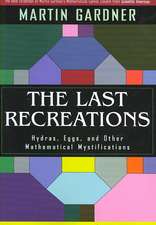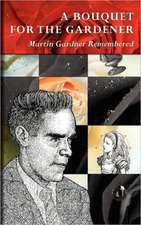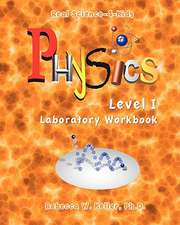Entertaining Science Experiments with Everyday Objects: Dover Children's Science Books
Autor Martin Gardneren Limba Engleză Paperback – 31 aug 1981 – vârsta de la 8 până la 14 ani
Gardner shows you how to re-create classic experiments with easily obtainable objects. Using just a flashlight, a pocket mirror, and a bowl of water, you can demonstrate the color composition of white light just as Newton did 300 years ago. With cardboard, colored paper, and wax paper you can perform "Meyer's experiment" with complementary colors. You need only a playing card, a spool, and a thumbtack to demonstrate Bernoulli's principle of aerodynamics. A soda bottle filled with water, a few paper matches, and a toy balloon elucidate Pascal's law governing pressure in liquids. And two drinking glasses, some matches, and a piece of wet blotting paper re-create a famous experiment, first performed in 1650 in Magdeburg, Germany, that dramatically reveals the force of ordinary atmospheric pressure.
In language simple enough to be easily understood by an 11-year-old, yet technically accurate and informative enough to benefit adults, and aided by Anthony Ravielli's clear illustrations, Gardner presents a splendid practical course in basic science and mathematics. While your child perplexes and delights his or her friends with a series of 100 amusing tricks and experiments, he or she is learning the principles of astronomy, chemistry, physiology, psychology, general mathematics, topology, probability, geometry, numbers, optics (light), gravity, static electricity, mechanics, air hydraulics, thermodynamics (heat), acoustics (sound), and inertia. This is a perfect refresher course for adults as well as an ideal introduction to science for youngsters.
"The experiments are all clearly explained and unusually well illustrated." "Booklist.""
Preț: 49.46 lei
Nou
9.47€ • 9.85$ • 7.81£
Carte disponibilă
Livrare economică 22 martie-05 aprilie
Specificații
ISBN-10: 0486242013
Pagini: 127
Dimensiuni: 137 x 216 x 8 mm
Greutate: 0.15 kg
Ediția:Dover.
Editura: Dover Publications
Seria Dover Children's Science Books
Notă biografică
Martin Gardner: A Remembrance
The worldwide mathematical community was saddened by the death of Martin Gardner on May 22, 2010. Martin was 95 years old when he died, and had written 70 or 80 books during his long lifetime as an author. Martin's first Dover books were published in 1956 and 1957: Mathematics, Magic and Mystery, one of the first popular books on the intellectual excitement of mathematics to reach a wide audience, and Fads and Fallacies in the Name of Science, certainly one of the first popular books to cast a devastatingly skeptical eye on the claims of pseudoscience and the many guises in which the modern world has given rise to it. Both of these pioneering books are still in print with Dover today along with more than a dozen other titles of Martin's books. They run the gamut from his elementary Codes, Ciphers and Secret Writing, which has been enjoyed by generations of younger readers since the 1980s, to the more demanding The New Ambidextrous Universe: Symmetry and Asymmetry from Mirror Reflections to Superstrings, which Dover published in its final revised form in 2005.
To those of us who have been associated with Dover for a long time, however, Martin was more than an author, albeit a remarkably popular and successful one. As a member of the small group of long-time advisors and consultants, which included NYU's Morris Kline in mathematics, Harvard's I. Bernard Cohen in the history of science, and MIT's J. P. Den Hartog in engineering, Martin's advice and editorial suggestions in the formative 1950s helped to define the Dover publishing program and give it the point of view which -- despite many changes, new directions, and the consequences of evolution -- continues to be operative today.
In the Author's Own Words:
"Politicians, real-estate agents, used-car salesmen, and advertising copy-writers are expected to stretch facts in self-serving directions, but scientists who falsify their results are regarded by their peers as committing an inexcusable crime. Yet the sad fact is that the history of science swarms with cases of outright fakery and instances of scientists who unconsciously distorted their work by seeing it through lenses of passionately held beliefs."
"A surprising proportion of mathematicians are accomplished musicians. Is it because music and mathematics share patterns that are beautiful?" -- Martin GardnerMartin Gardner was a renowned author who published over 70 books on subjects from science and math to poetry and religion. He also had a lifelong passion for magic tricks and puzzles. Well known for his mathematical games column in Scientific American and his "Trick of the Month" in Physics Teacher magazine, Gardner attracted a loyal following with his intelligence, wit, and imagination.























